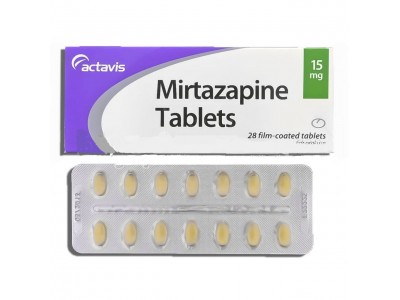Mirtazapine is primarily prescribed as an antidepressant, though it also has notable effects as an appetite stimulant. Its primary purpose is to treat major depressive disorder (MDD), but it can also be used for other conditions such as anxiety disorders and insomnia. Mirtazapine belongs to the class of medications known as tetracyclic antidepressants and works by modulating neurotransmitters in the brain, particularly serotonin and norepinephrine. This modulation helps to alleviate symptoms of depression such as low mood, anxiety, insomnia, and lack of interest in daily activities.
Despite its efficacy as an antidepressant, mirtazapine is often noted for its side effect of increased appetite and weight gain. This occurs because mirtazapine antagonizes histamine H1 receptors and serotonin 5-HT2 and 5-HT3 receptors, which not only contributes to its sedative effects but also stimulates appetite. This side effect can be beneficial for patients who experience significant weight loss and poor appetite due to their depression. By improving appetite and encouraging weight gain, mirtazapine can help address the physical aspects of depression, leading to overall better health outcomes.
Mirtazapine's unique profile makes it especially useful in certain populations. For instance, it can be advantageous for elderly patients or those with significant weight loss or insomnia, as it can help improve sleep and nutritional status while treating depressive symptoms. Additionally, the sedative effects can be helpful for patients who have trouble sleeping due to their depression.
In summary, mirtazapine is primarily prescribed as an antidepressant due to its efficacy in treating major depressive disorder by modulating key neurotransmitters. Its secondary effect of increasing appetite and causing sedation can be particularly beneficial in managing certain symptoms of depression, such as insomnia and weight loss, thereby providing a more comprehensive treatment approach for affected individuals.

